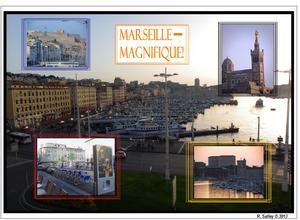Kinesiology encompasses many specific disciplines, and is a field of study that has been greatly changing over the years. In taking an in-depth look at one of these sub-disciplines of Kinesiology, we may be able to connect to its benefits and purposes in a more efficient way. Education research is a major sub-discipline in this field, and affects the developing career choices within Kinesiology in a very big way.
Sports pedagogy is a coinciding partner to the education research discipline of Kinesiology. It promotes educational research, involving physical education and sports and often takes the form of a teacher or coach. The definition of pedagogy is basically a teaching of a subject, especially in the sense of an academic setting, or even within the production of a theory (“New American Webster”). Sports pedagogy, therefore, is the development and construction of the teaching of this ever-broadening idea of sports science. Educational research within the disciplines of Kinesiology is fully founded on the use of pedagogy, a constantly changing and growing program to enhance the scientific possibilities of teaching about sports and science in sports.
Application of this principle can be seen in the areas of education and occupational choices that have emerged. Technology has improved over the years, and this has impacted the way that we are able to teach the upcoming generations about the body and the science of action. On the University of the Pacific website, they have an explanation and list of career choices for a Sports Sciences degree. This is what they said about this area of study:
Sport Sciences is engaged in understanding and promoting physical activity. Our goal is to examine how physical activity and sport contribute to the quality of life…from a wide range of perspectives…so that our graduates have the ability to conceptualize and analyze human movement in a holistic manner.”
This hits the nail on the head regarding the education that we have access to, and the way we are able to pass on this information, as well as add to it ourselves through continued study. There are great opportunities arising for greater sports pedagogy development and teachers who can add to the education research of our generation. They also touched on the importance of experiential learning, which embraces the connection between the mental conceptions and the physical and emotional understanding and experience of sports sciences. All of these integrations of their program can eventually lead to their graduate students having a wide range of opportunities for career choices, including education research. These students can become teachers and coaches of physical activity and movement, and further their students in the ways of Kinesiology and fitness, and overall wellness.
There are necessary steps to be taken in order to achieve a professional level in education research regarding sports pedagogy. Finding a school that includes the aspects that interest you in this field of study is first. In the University of the Pacific, they have a list of research opportunities, as well as careers that often emerge from their graduate students. Doing the appropriate research about your school and the classes that they offer is very important. Education is an indispensable asset when desiring to be professional in any career, and to challenging and bettering yourself to you full potential. As for teaching and coaching careers, there are many great schools and programs to lead you in the right direction. As sports sciences are developed, there is a continuation of need for qualified and talented physical education teachers and coaches that will go the distance for their kids, and emphasize the importance of fitness and sports education for the upcoming generations.
To obtain a job in sports pedagogy, the time to start is now. Character and goals are important to set in place, especially in this field of work. Teaching and coaching can be a very personal and vitally influential line of work. The responsibilities and skills required of a sports teacher or a coach include not only rules and techniques, but also the ability and drive to understand the player and their level of development, and be a role model in their patience and enthusiasm (“Teaching and Coaching Career”). To pursue this career, one must accrue the expected expertise. This may include playing experience, attending clinics and worships, and participating in the certification and licensing programs (“Teaching and Coaching Career”). Other steps to securing a position in this field is acquiring a teaching certificate, having expertise in a secondary sport, and developing practical experience (assistant coaching, being involved in a youth sports program, etc.) (“Teaching and Coaching Career”).
Kinesiology has come a very long way, and has been a constant area of development and improvement over the years. One of the major sub-disciplines of Kinesiology has taken the form of sports pedagogy, and has produced generations of sports education and valuable teachers and coaches for our youth. Through these hands-on positions, young men and women have the opportunity to experience healthy role models in their life, as well as a foundation for health, fitness and overall wellness for the rest of their lives. These positions take determination, character and the proper preparation and expertise to be the best you can be. There are many options in Kinesiology, and great schools and programs to get you set for a lifetime of service in sports pedagogy. The time to start is now. Develop the expertise, certificates and program completions, and practical experience to achieve your goals.
Sources:
Miller, Amy. “Teaching and Coaching Careers”. 20 February 2009. PowerPoint.
“Pedagogy.” The New American Webster Handy College Dictionary. 4th ed. 2006.
University of the Pacific. “Why Choose a Sports Science Degree at Pacific?” 2009. 23 February 2009,



